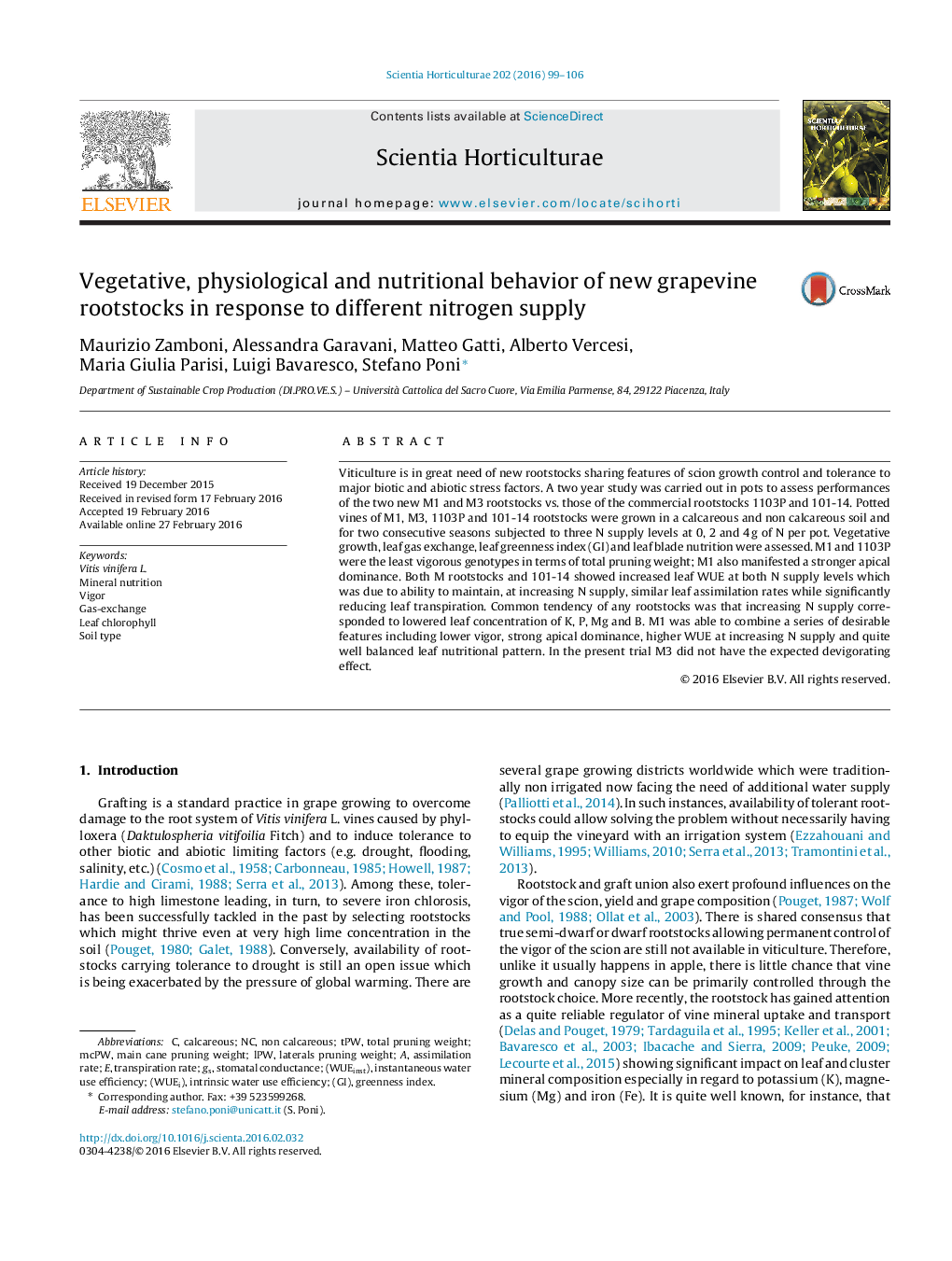| Article ID | Journal | Published Year | Pages | File Type |
|---|---|---|---|---|
| 4566003 | Scientia Horticulturae | 2016 | 8 Pages |
•Viticulture is in great need of new rootstocks regulating vigor and nutrition.•New M1 and M3 rootstocks were evaluated at different N supply.•M1 was the least vigorous with strongest apical dominance.•Both M rootstocks and 101–14 showed increased WUE at any N supply.•M3 did not show any vigor reduction vs. commercial rootstocks
Viticulture is in great need of new rootstocks sharing features of scion growth control and tolerance to major biotic and abiotic stress factors. A two year study was carried out in pots to assess performances of the two new M1 and M3 rootstocks vs. those of the commercial rootstocks 1103P and 101-14. Potted vines of M1, M3, 1103P and 101-14 rootstocks were grown in a calcareous and non calcareous soil and for two consecutive seasons subjected to three N supply levels at 0, 2 and 4 g of N per pot. Vegetative growth, leaf gas exchange, leaf greenness index (GI) and leaf blade nutrition were assessed. M1 and 1103P were the least vigorous genotypes in terms of total pruning weight; M1 also manifested a stronger apical dominance. Both M rootstocks and 101-14 showed increased leaf WUE at both N supply levels which was due to ability to maintain, at increasing N supply, similar leaf assimilation rates while significantly reducing leaf transpiration. Common tendency of any rootstocks was that increasing N supply corresponded to lowered leaf concentration of K, P, Mg and B. M1 was able to combine a series of desirable features including lower vigor, strong apical dominance, higher WUE at increasing N supply and quite well balanced leaf nutritional pattern. In the present trial M3 did not have the expected devigorating effect.
